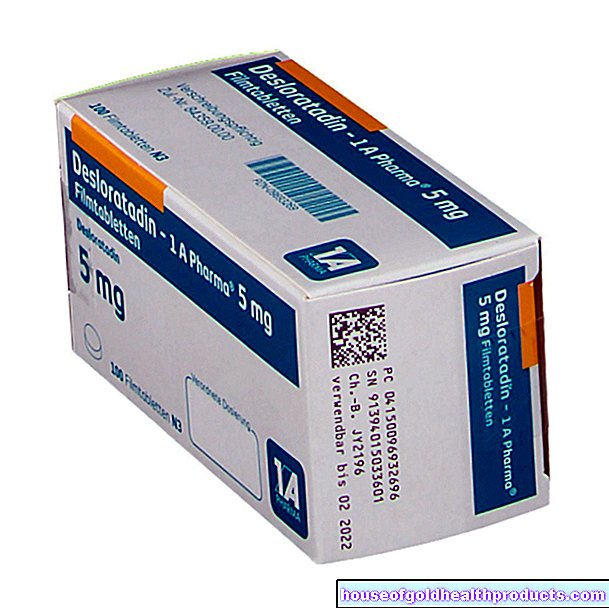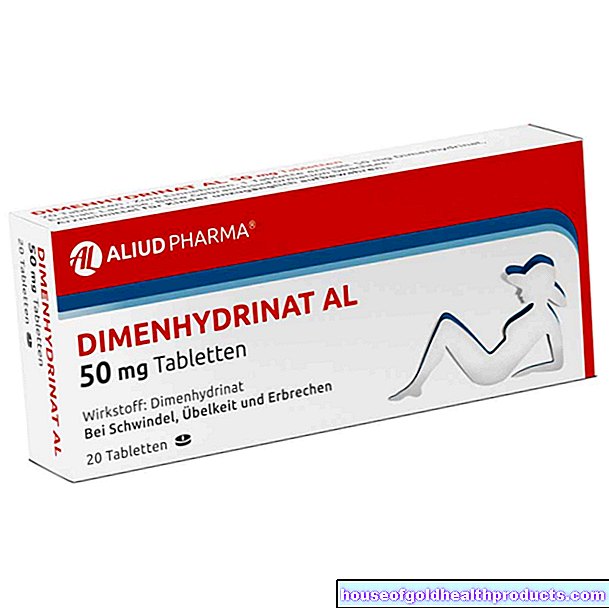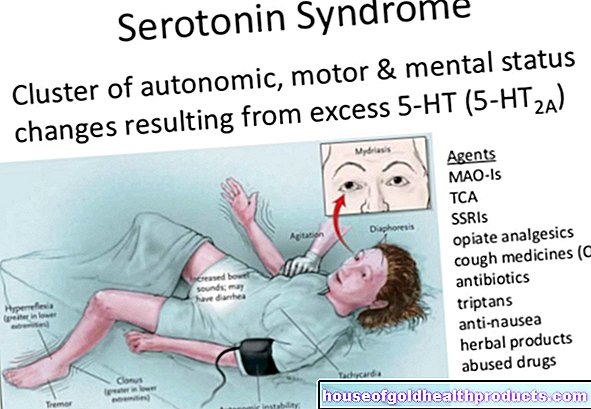Levetiracetam
Updated on All content is checked by medical journalists.Levetiracetam is one of the most important anti-seizure remedies. It lowers the risk of an epileptic fit. The active ingredient is generally considered to be well tolerated and can also be combined with other drugs. The most common side effects are drowsiness and headache. Here you can read everything you need to know about levetiracetam and its use.
This is how levetiracetam works
Levetiracetam is a drug from the class of anti-epileptics (drugs for epilepsy, also called anticonvulsants). It mainly mediates its effect by reducing the amount of certain messenger substances in the nervous system (neurotransmitters).
The human nervous system is activated or inhibited by neurotransmitters. Normally, these messenger substances are released according to external circumstances and ensure that the body reacts appropriately to various situations such as injuries, stress or rest.
This controlled equilibrium is disturbed in diseases of the nervous system. For example, a genetic predisposition or brain damage can increase arousal or decrease inhibition. The result: the brain is overexcitable, which can lead to epileptic seizures.
Levetiracetam lowers the overexcitability of nerve cells in the brain by binding to a special protein (synaptic vesicle protein 2A). This docking reduces the amount of an exciting messenger substance released. Levetiracetam also influences the calcium level in the nerve cells in various areas of the brain. In total, the neuronal excitation is reduced.
Uptake, breakdown and excretion
Levetiracetam is absorbed quickly and almost completely from the intestine into the blood after it has been taken by mouth (orally). Then it spreads throughout the body.
After around seven hours, half of the active ingredient is broken down (half-life). The breakdown products are mainly excreted in the urine via the kidneys.
When is levetiracetam used?
The areas of application (indications) of levetiracetam include various forms of convulsive disorders, namely:
- Focal seizures (limited to one brain region) with or without secondary generalization (= spreading to both halves of the brain) - Levetiracetam is used here either alone (as monotherapy) or as an add-on therapy to other drugs
- Myoclonic seizures (seizures with sudden shooting jerks of the muscles) - the active ingredient is used here as an additional therapy
- Tonic-clonic seizures (begin with a sudden stiffness of the body, followed by convulsive jerks) - here, too, the active ingredient serves as an additional therapy
This is how levetiracetam is used
Medicines containing levetiracetam are usually given in the form of tablets or drink solutions. In acute cases, the active ingredient can also be injected directly into the bloodstream.
The dosage is usually between 500 and 1500 milligrams of levetiracetam, but is determined individually by the doctor. For example, the dose must be reduced in patients with impaired kidney function and in children and adolescents.
Levetiracetam tablets and drinking solutions are usually taken twice a day, regardless of meals, and always at around the same time.
If the active ingredient is to be discontinued, this should be done "gradually" (not abruptly). This means that the dose will be reduced gradually.
What are the side effects of levetiracetam?
Very often, i.e. in more than ten percent of those treated, levetiracetam causes side effects such as headache, dizziness and drowsiness.
Frequently, i.e. in one to ten percent of those treated, taking the drug leads to anxiety disorders, depressive moods, weight loss and gastrointestinal complaints.
If you suddenly stop taking levetiracetam, the sudden lack of the active substance can lead to increased seizures. Therefore, the dose should always be reduced gradually when use is to be stopped.
What should be considered when taking Levetiracetam?
Contraindications
Levetiracetam must not be used if you are known to be hypersensitive to the active substance.
Interactions
If patients also use methotrexate (e.g. against a rheumatic disease), the two drug levels in the blood can influence each other.
Driving and using machines
Medicines containing levetiracetam can impair your ability to react as a side effect may be drowsiness. Particular attention should therefore be paid to individual tolerance, especially at the beginning of treatment. Together with the attending physician, it should then be decided whether active participation in road traffic and the operation of heavy machinery is still possible without risk.
The decision to actively participate in road traffic or to use heavy machinery also depends on the frequency and severity of the seizures and how they are controlled by levetiracetam.
Age restrictions
Medicines containing levetiracetam may be used for treatment with only one active ingredient (monotherapy for partial seizures) in adolescents aged 16 years and over.
In the form of a combination therapy (additional therapy), levetiracetam can be used in certain forms of epilepsy from the age of 12 years (tonic-clonic and myoclonic seizures) or from the first month of life (partial seizures).
In infants and young children, the dosage is reduced in accordance with body weight and kidney function.
pregnancy and breast feeding period
Levetiracetam can also be used during pregnancy. In addition to lamotrigine, the active ingredient is the antiepileptic of choice when drug treatment of epilepsy is necessary. So far, no teratogenic effects from the treatment have been found.
Levetiracetam can also be used when breastfeeding. As it passes into breast milk, breastfeeding is not recommended during use. Adjustment disorders have occasionally been reported in the newborn.
The risk of taking medication during pregnancy and breastfeeding is always weighed against the risk of untreated epilepsy.
How to get Levetiracetam medication
Therapy with levetiracetam requires regular medical monitoring. To ensure this, drugs with this active ingredient are only available from pharmacies in Germany, Austria and Switzerland with a doctor's prescription.
Since when is levetiracetam known?
Levetiracetam was developed from the older active ingredient Piracetam by making minor changes in its chemical structure. This is actually used to treat dementia (progressive loss of memory).
Rather by chance, it was discovered that a derivative (derivative) of piracetam - called levetiracetam - has an anti-epileptic effect. Finally, levetiracetam was approved in the EU in 2000 for the treatment of seizure disorders.
Tags: home remedies prevention organ systems





























